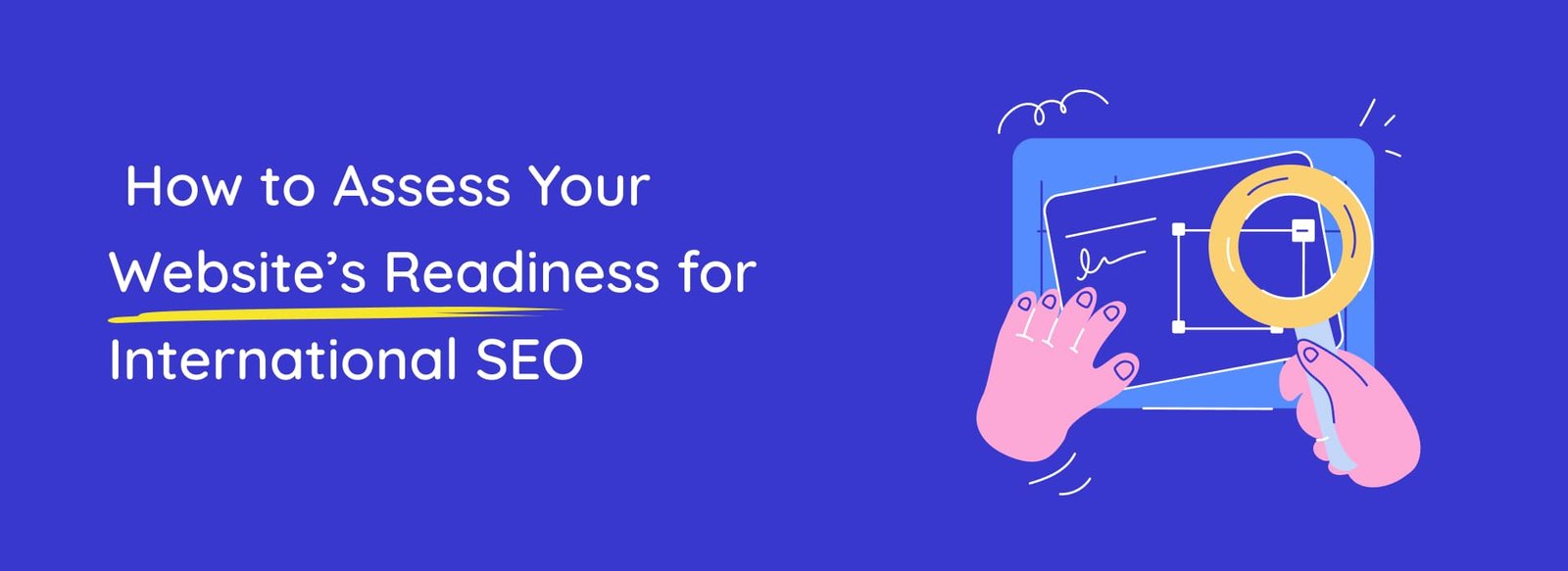14, Jun, 2024() | Ayraxs Seo

14, Jun, 2024() | Ayraxs Seo

Expanding your business into international markets can be a game-changer for growth and brand visibility. However, tapping into global markets requires more than a well-designed website and an SEO plan. It is pivotal to go a few steps further and ensure that your website is finely tuned to resonate with your international audience.
In this article, we will discuss how to effectively assess your website’s readiness for international SEO, and how to implement SEO for international markets to boost your digital footprint worldwide.
Before you start implementing an international SEO plan for your business, it’s crucial to verify if your website is even eligible for global optimization.
An in-depth market research establishes a strong foundation for the long-term success of your international SEO strategy.
Start by clearly defining your business objectives, budget, and scalability plan. List down your main competitors and study popular search engines in your targeted countries.
Discover market gaps in different regions or countries by utilizing tools like Ahrefs, SEMrush, UberSuggest, and Google Trends.
Utilize your website’s analytics page to pinpoint the international regions from where you are receiving traffic. Then, strategically select target countries based on factors such as languages, cultural nuances, and purchasing patterns within those markets.
Secondly, choose an SEO-friendly international URL structure suitable for your specific goals and resources.
Let’s take a look at some common domain structures.
If your website is in one specific language only but you want to target different countries you could use the following domain structures:
If your website is in one specific country only but you want to target multiple languages then you could use the following domain structures:
If your website is targeting multiple countries and multiple languages at the same time then you could use the following domain structures:
Conduct keyword research for each target market to understand the local search trends and language variations. This can be done by utilizing keyword research tools like Ahrefs, SEMrush, UberSuggest, and Google Keywords Planner.
Beware that machine translation of keywords from one language to another may not always be effective. Consider cultural nuances, local slang, and search trends when selecting keywords.
Create high-quality, relevant content in the languages of your target audiences. This may include product descriptions, blog posts, FAQs, and landing pages. Aim for natural-sounding content that resonates with local users.
Localize your content by translating it into the target languages. Always use Human translation for translating content to preserve the meaning of the original texts.
A Hreflang tag is a piece of code that goes into the <head></head> section of a website on each page. This tag acts as a signal that specifies the language or language + country of content to the search engines.
Let’s discuss this concept using an example:
<link rel=”alternate”
href=https://example.com
hreflang=”es-us” />
In this example, the hreflang code will signal to the search engines that this page is in Spanish and is meant to target U.S. customers.
More than 58.67% of website traffic worldwide is now driven by mobile devices, hence, mobile optimization is essential for international SEO success.
Ensure that your website is mobile-friendly and optimized for different devices and screen sizes in different markets.
Link building strategy for international SEO involves building links to relevant and well-known websites in every language and country. For instance, a software company might need to link to technology blogs posted by reputable websites in every country it operates in.
Build quality links by reaching out to high-domain authority websites and providing them with value (e.g. guest posts) in exchange for backlinks.
Perform regular technical SEO audits to identify and fix issues that may affect international SEO, such as broken links, crawling errors, canonicalization issues, or low loading speeds.
Once you have successfully implemented an international SEO strategy it is crucial to regularly monitor site speed and performance to proactively identify and resolve issues. Use analytics tools like Google Analytics, and Google Search Console to monitor performance, indexation status, track rankings, and analyze user behavior in different markets.
This will allow you to collect real-time data that can be used to improve your website’s loading speed and overall health.
Now that you understand the essential steps for implementing international SEO, let’s explore some best international SEO practices to maximize your efforts:
Ayraxs – a premiere international SEO company will help you expand your business into international markets by creating a foolproof SEO strategy custom-tailored to your business needs. We take immense pride in helping businesses dominate the international landscape using our state-of-the-art technologies and modern SEO methodologies.
Need to know more about international SEO, read our related blog “A Beginner’s Guide to International SEO“.
If your website is ranking in different countries and you are getting traffic from multiple markets and geographical regions then your website is successfully optimized for SEO for international markets.
You can target international SEO by following the steps given below:
Create localized content for the countries you’re trying to target considering their languages, cultures, and search demands. Use hreflang tags to signal search engines that your content is suitable for the audiences you’re to target and build quality backlinks from those markets.
Research the market of the country you’re trying to target including popular search engines, localized keywords, and cultural norms. Human translate your website’s content in a targeted language and build local backlinks from domain-authority websites. Use hreflang tags to signal search engines that your content is suitable for that country.